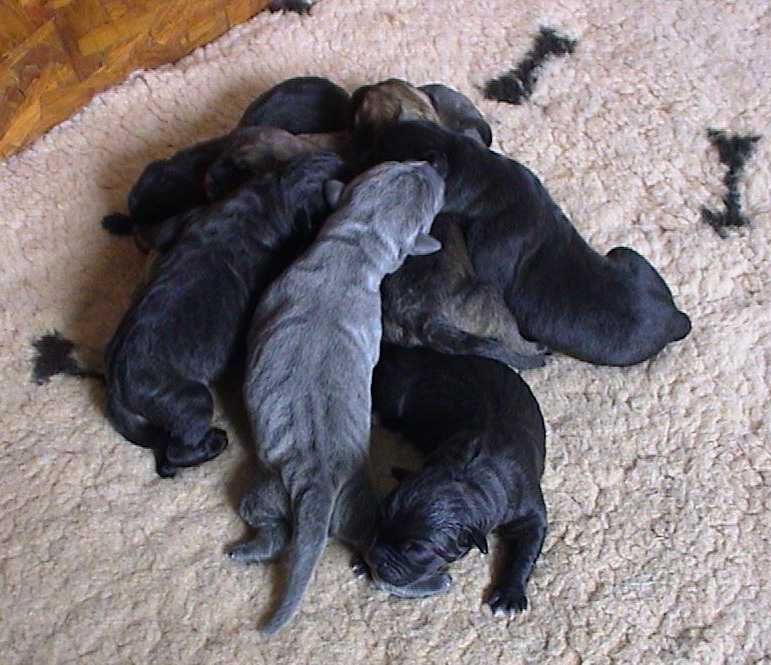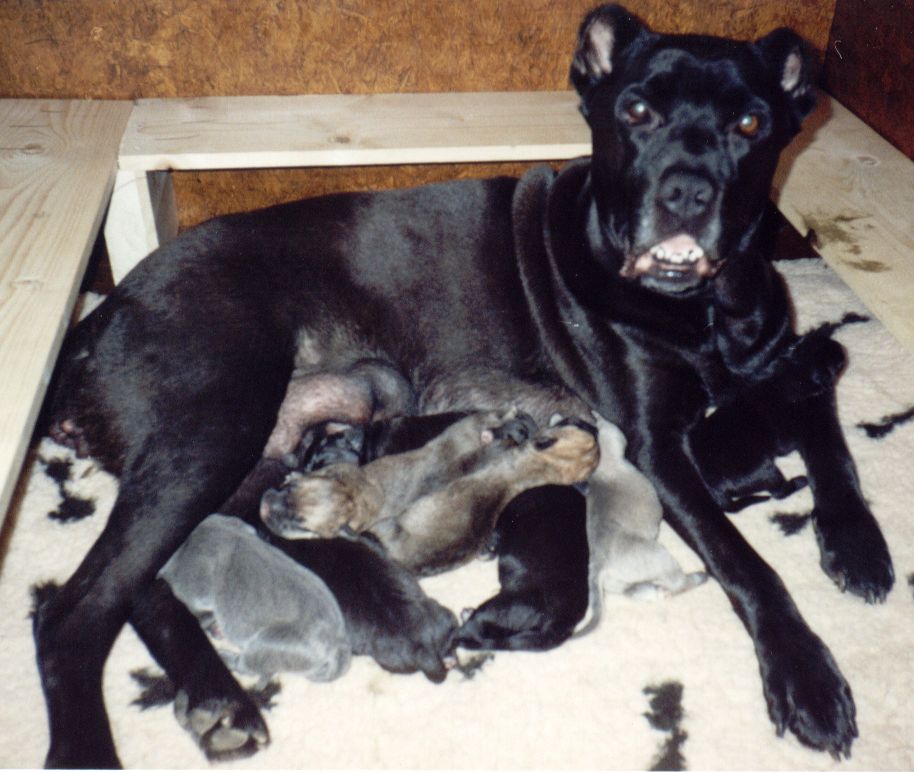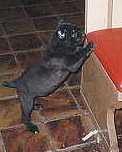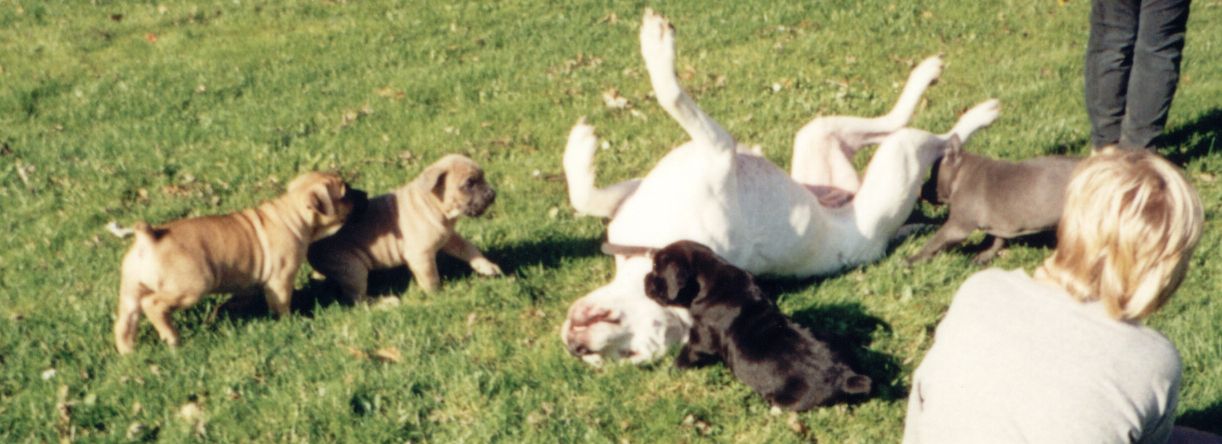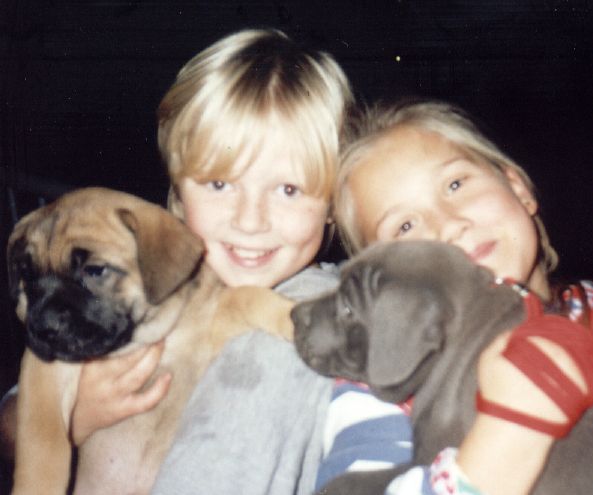|
| |
|
|
Socialisation |
|
THE
SOCIALIZATION FROM PUPPIES Probably the most important phase in a dogs life is the socialization-phase. This is from the end of the third week till about 12 weeks and is often called the primary socialization-phase. After that comes the secondary socialization-phase, which is from 12 weeks till puberty. This phase is also called the anxiety-phase.
WHAT
IS SOCIALIZATION AND INCULCATION
? During the socialization the animal learns the marks from the creature or creatures which are present in his direct environment and socialize with him. The consequences can be: that is the creature the pup binds with; second the pup will later socialize normal with these creatures. Third in adulthood the dog won’t see them as a prey. Either the effects of the inculcation or the socialization are difficult to change. In this sensitive phase one does well to see that different events will happen to the pups, like is described below. In the phase-phase there are different things we get to deal with, with our pets.
From the third week till the eighth week the pups are still in the litter and the breeder has the responsibility for the socialization. From the fifth week the natural curiosity will slowly get less and the natural escape-habit slowly gets stronger. In the phase-phase the behavior of the mother-dog is of great influence on the pups. Here we speak of the maternal effect. If the mother reacts very frightened on visitors, children, strong sound-stimulus and so, there is a possibility that the pups will take over this behavior. With the breeding of pups it is very important that the mother-dog doesn’t have negative influences on the development of the pups. The breeder must make sure he offers enough stimulus. The pups have to learn that different kinds of people exist, small-big, young-old, fat-thin, hairy-bold and black-white. The pups also have to learn that there are different kinds of dogs, which look different from the bitch.
It is proven that dogs, which physically come in contact with different people (both young and old) and that dogs, which physically come in contact with different breeds, in the adulthood won’t experience humans and dogs as danger or potential prey.
It is a fact that if to little socialization occurs in a poor environment the results can be disastrous. One can expect that the results are even more serious when scarred dogs are used for the stud. It is proven that animals, which go through a good socialization and with that come in contact with new things like a vacuum-cleaner, loud noises, umbrellas etc., later will be able to handle new things better. This means that the pup has to experience these things at the breeder’s. Next to the breeder the new owner plays an important role with the socialization. From the average of 8 weeks the pups will go to their new owner. He has to continue the socialization. The pup has to come in contact with new events again. Good examples for this are the marketplace, the train-station and the bus-stop, the school play ground, garbage-bags which are outside etc. But also joggers, other dogs, visitors, vacuum-cleaners, falling key-rings and so on. It is important to know that the natural escape-habit will grow with the pups. The role of the new owner is very important with the process-process. If the pup sees something new which scares him, the owner is not suppose to comfort or lift the pup or even walk away. This will confirm that the stimulus is indeed threatening. The pups learns very quickly, he is in his anxiety-phase and it will be very difficult to learn the pup that these stimulus are not threatening at all. A wrong comforting like this will lead to learning fear. This is a conditionings error. In a situation like that the master has to stay neutral and pretend that nothing is wrong.
The no longer exposing to stimulus during the secondary socialization can even lead to de-socialization, no matter how good the primary socialization has been. The dog can in this case still become frightened for humans, dogs or events. The effects of bad socialization are both for the dog as his master very negative, the dogs is frightened and can develop fright-aggression. The second negative effect is, that the dog can consider a child or an other dog as a prey and hunt it. A part of aggression among dogs can be explained this way. Because the effects from socialization are difficult to reverse, long lasting and often serious problems can occur. Socialization errors are most of the time only recoverable for a part and one has to invest a lot of time and trouble to do so. A bad socialized dog will never fully recover. Nancy Koper | |


